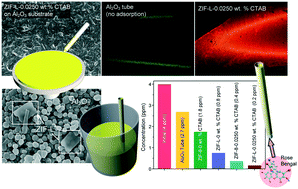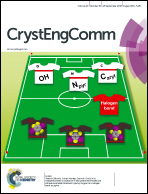Metal–organic frameworks for dye sorption: structure–property relationships and scalable deposition of the membrane adsorber†
Abstract
Metal–organic frameworks (MOFs) are increasingly being used for the sorption of dye molecules. Researchers have demonstrated the high sorption performance of several MOFs; however, their structure–property relationships have yet to be fully elucidated. Furthermore, the lack of a generalized deposition method for the fabrication of MOF membranes limits the industrial-scale application of MOF-based sorbents. In this work, we used a polymorphic system with three MOFs, ZIF-8, ZIF-L, and dia(Zn), to identify the key factors affecting the dye sorption performance. We found that ZIF-L, which possesses free imidazole molecules that leach into water during sorption, had the highest sorption capacity for the dye molecule rose bengal. We developed a wet deposition method for the creation of ZIF-L membranes on a porous alumina substrate using stabilized suspensions of ZIF-L. Tubular alumina supports cast with ZIF-L were used as a membrane adsorber for the removal of rose bengal under continuous-flow conditions. Finally, we investigated the influence of the membrane adsorber synthesis conditions on the sorption characteristics.



 Please wait while we load your content...
Please wait while we load your content...